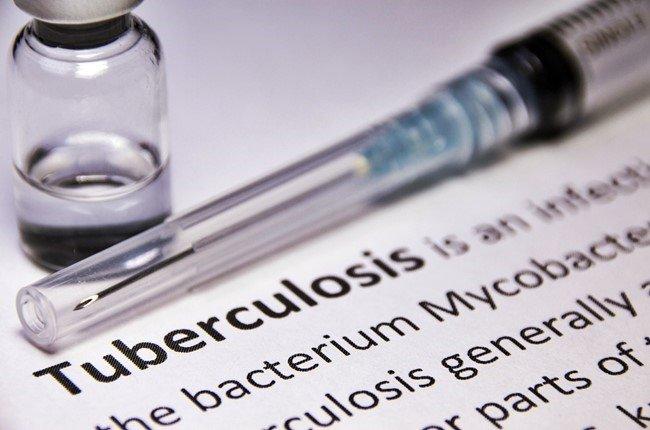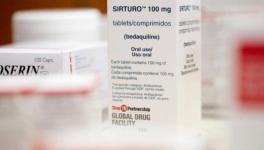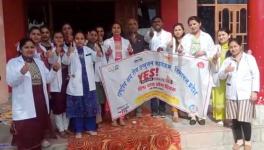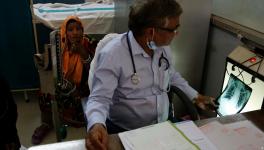Diagnosis and Recovery Long, Expensive for Multidrug-Resistant TB Patients, Reveals Study

Image Courtesy: iStock
There are long delays in access to care for multidrug-resistant tuberculosis (MDR-TB), with patients shuttling back and forth between providers and health sectors--private and public--before they are eventually enrolled for effective treatment, according to a recent paper published on October 27, 2021.
The paper, titled “Tuberculosis Pathways to Care and Transmission of Multidrug-Resistance in India,” published in the American Journal of Respiratory and Critical Care Medicine included authors from several institutes, including Dr DY Patil Medical College Hospital and Research Centre, Pune, World Health Organisation, Johns Hopkins University, USA, and Harvard Medical School, USA.
“India is experiencing a regional increase in cases of multidrug-resistant tuberculosis (MDR-TB). Given the complexity of MDR-TB diagnosis and care, we sought to address key knowledge gaps in MDR risk factors, care delays, and drivers of delay to help guide disease control,” the authors said.
Researchers conducted interviews with adults registered with the National TB Elimination Program (NTEP) for MDR (128 patients) and non-MDR-TB (269 patients) treatment to quantitatively and qualitatively study care pathways. The study, which was conducted in 2018-19, was funded by Harvard-Dubai Centre for Global Health Delivery and was done among patients who are registered with the National TB Elimination Control Program (NTEP) in Maharashtra.
Study participants underwent a structured interview followed by an in-depth interview for the majority. In the structured interview, the researchers collected socio-demographic data including employment, marital status, family type, education, residence type and locality (crowded: If residing in slums or huts and non-crowded: if residing in a colony/compound, apartment, or a bungalow), average time spent in a crowded locality per day (24 hours or <24 hours), history of TB, health providers visited, TB diagnosis for the current episode, substance abuse and comorbidities. Additional data collection from the NTEP treatment cards included the type of treatment regimen, sputum smear status, comorbidities and substance use.
The researchers found that the median duration between symptom onset and first encounter with the health system was 15 days for the MDR-TB group and 10 days for the non-MDR group. Health system delays between the first encounter and diagnosis were longer among MDR patients, median 80 days, than among non-MDR, median 48 days. Delays between the onset of symptoms to diagnosis were longer for MDR, median 90 days than for non-MDR-TB, median 60 days. For 29% of MDR patients, the total duration from symptom onset to diagnosis was more than 6 months. Treatment rapidly followed diagnosis for non-MDR patients (median delay - 1 day), but treatment delay was more substantial for MDR (median delay - 8 days).
According to the research, patients with MDR-TB had their first health encounter in the private sector in 68% of the cases, followed by the NTEP, 26%, and in a pharmacy/chemist in 6% of the cases. The study said, "Patient-reported reasons for seeing a private-sector care provider included an established relationship with a family physician, confidentiality, easy access or prior good experience."
The majority of MDR patients (75%) reported that they had to shop around for care. Of the 57 patients who left the private sector in favour of the NTEP, 44 (77%) reported reasons for no symptomatic relief, and 12 (21%) reported that treatment was not affordable in the private sector. Twelve of 128 patients (9%) reported that they were admitted for ‘saline therapy’ in the private sector.
Of the 24 (19%) patients who returned to the private sector after one or more encounters in the NTEP, 18 (75%) reported that they had no symptomatic relief and hence there was a need for a second opinion from their established private provider; four (17%) were unable to provide records on prior TB treatment requested by NTEP staff and their treatment initiation was delayed (by two weeks or more) prompting their return to the private sector; two patients (8%) needed the private sector for drug susceptibility testing (DST) that was not available at the time in the government facility.
The median number of providers visited by MDR-TB patients was 4. Only nine of 128 patients (7%) received their MDR-TB diagnosis at the first healthcare encounter; all of these patients first accessed care in the NTEP. Patients continuing in the private sector, that is, not referred to the NTEP by the second encounter, visited an additional median number of two providers before receiving their diagnosis. This was significantly higher than for patients referred to/seeking care in the NTEP at the second encounter. Only 11 (9%) patients received their MDR diagnosis in the private sector, the remaining were diagnosed at the NTEP.
Similar to MDR patients, the majority, that is, 72% of non-MDR TB patients had their first encounter in the private sector and for similar reasons. Fourteen patients (10%) first accessed care from a chemist, and the remaining from the NTEP. The study said, "Pathways to care were also complex albeit it lesser so than for MDR patients."
The median number of providers visited by non-MDR TB patients was 3 and none of the 139 TB patients was diagnosed at the first encounter. Eighteen patients (13%) left the NTEP for the private sector after one or more NTEP encounters due to the lack of symptomatic relief. Thirty-six (26%) patients were diagnosed in the private sector.
The researchers assessed that patients with prior TB were more likely to access care in the NTEP due to confidence in the quality of care or familiarity. Although the majority of MDR patients with a first encounter in the NTEP had a history of TB, the reverse was not true as less than half of MDR patients with a history of TB initially assessed care in the NTEP. MDR patients with a prior history of TB were nevertheless more likely to access care in the NTEP than in the private sector. A similar pattern was observed among non-MDR TB patients.
The researchers asked patients to approximate out-of-pocket health expenditure in the private sector prior to approaching the NTEP (TB care is free in the NTEP). Sixty-two of 128 (49%) patients with MDR-TB provided estimates of expenditure with the median expenditure being Rs 10,000, and 14 (23%) reported catastrophic expenditure of more than or equal to 20% of household annual income. For non-MDR-TB patients, median private sector expenditure was significantly lower at Rs 2,050 and 8% reported catastrophic expenditure.
A strong association was observed between continuous residence in a crowded locality and MDR-TB, a result suggestive of MDR transmission in these localities. It was also observed that younger patients are more likely to have MDR-TB.
"An association of MDR with young age in other high prevalence settings has been interpreted to be consistent with MDR community transmission as TB reactivation is more common among older patients," the study said.
According to the researchers, delays in diagnosis and the subsequent initiation of effective therapy may be important drivers of MDR-TB transmission. A recent study of drug-susceptible TB patients in the United States, demonstrated the risk of TB infection among household members to be 5% higher with an everyday increase in care delay. The same study also demonstrated a higher rate of TB complications including hemoptysis, aspergillosis, bronchiectasis and pneumothorax with longer delays.
The researchers observed long delays between the first healthcare encounter and diagnosis for both TB and MDR-TB patients. "Targeting the long delays in this portion of the care cascade is likely to have a major impact on overall delays. In more detail, pathways to care analysis revealed the private sector to be the point of first contact for most patients, even when they previously have had TB," the study said.
This is despite the NTEP being the nationally endorsed provider of TB and MDR-TB care. "Reasons underlying this preference most notably include a trust or established relationship with a private practitioner that can even result in ‘bounce back’ to the private sector after referral to the NTEP in 13-19% of patients," the researchers said.
Pathways analysis also revealed that 23% of MDR-TB patients had catastrophic expenditure prior to reaching the NTEP and the provision of questionable therapies, like saline, in the private sector. This is consistent with findings from prior studies in Maharashtra that identified poor knowledge of MDR-TB and its treatment among private practitioners. "Overall, MDR patients report not only a prolonged path to diagnosis but also a complex one with multiple encounters often across both private and public sectors," the study concluded.
Get the latest reports & analysis with people's perspective on Protests, movements & deep analytical videos, discussions of the current affairs in your Telegram app. Subscribe to NewsClick's Telegram channel & get Real-Time updates on stories, as they get published on our website.























